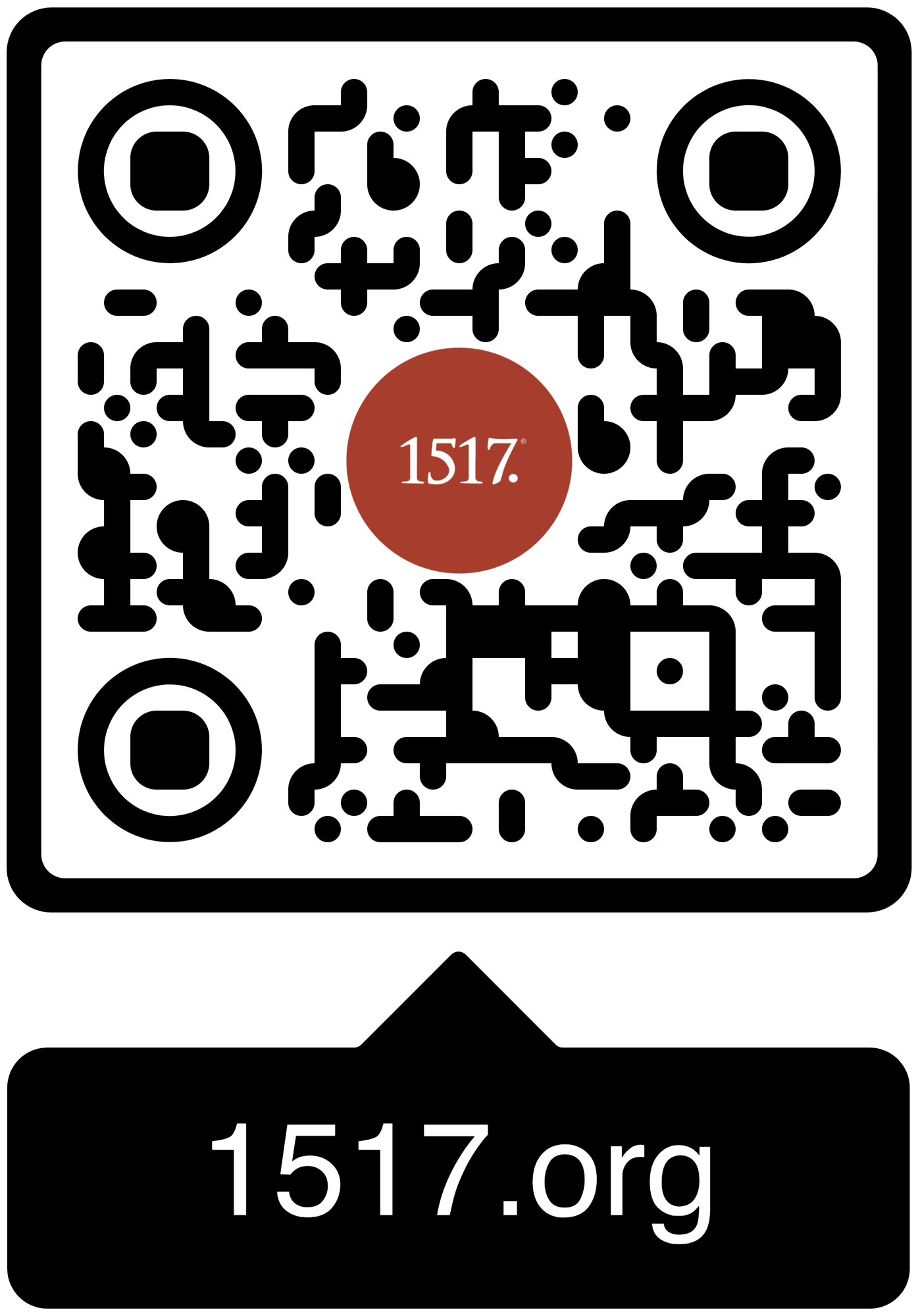We don’t flinch at sin. We speak Christ into it.
07/07/25
One might say that the first statement of the Reformation was that a saint never stops repenting.
07/04/25
Wisdom and strength require bootstrap-pulling and the placing of noses to grindstones.
All Articles
Author
- All Authors
- 1517 Publishing
- 1517 Staff
- A. A. Just Jr.
- A.J. Vega
- Aaron Boerst
- Adam Francisco
- Adam Stetson
- Amy Mantravadi
- Andrew Foss
- Anthony DiLiberto
- Blake Flattley
- Bob Hiller
- Bob Sundquist
- Bonnie Petroschuk
- Brad Soenksen
- Bradley Gray
- Brandon Hanson
- Brandon Pangman
- Brennan Manning
- Brian W. Thomas
- Bror Erickson
- Bruce Hillman
- C.S. Lewis
- Caleb Keith
- Chad Bird
- Charles E. Fry
- Christopher J. Richmann
- Cindy Koch
- CJ Armstrong
- Craig Donofrio
- Dan Chrismer
- Dan van Voorhis
- Dan Weber
- Daniel Deen
- Daniel Emery Price
- Daniel Stenberg
- David Clay
- David Rufner
- David Schmitt
- Delwyn Campbell
- Dominick Santore
- Donavon Riley
- Edward Killian
- Elyse Fitzpatrick
- Erick Sorensen
- Gage Jordan
- Gerhard Forde
- Grant Klembara
- Greg Koukl
- Gretchen Ronnevik
- Haroldo Camacho
- Hermann Sasse
- Jacob Corzine
- Jacob Smith
- Jake Allstaedt
- Jared C. Wilson
- Jason Lane
- Jason Lang
- Jason Oakland
- Jay Sawrie
- Jeff Mallinson
- Jeffrey Pulse
- Jenifer Mohan
- Jessica Delgado
- Jessica Thompson
- Jim Nestingen
- Joel Fitzpatrick
- Joel Hess
- Joey Goodall
- John Bombaro
- John Bortulin
- John Chrysostom
- John T. Pless
- John W. Hoyum
- John Warwick Montgomery
- Jonathan Ruehs
- Jordan Spina
- Joshua Miller
- Justin Rossow
- Karen Stenberg
- Kathy Morales
- Katie Koplin
- Kelsi Klembara
- Ken Sundet Jones
- Kerri Tom
- Kevin Hale
- Kevin McClain
- Kyle G. Jones
- Larry D. Hughes
- Laura Bauer
- Luke Kjolhaug
- Magnus Persson
- Mariah Coward
- Mark Jasa
- Mark Mattes
- Mark Pierson
- Martin Luther
- Matt Johnson
- Matt Kroelinger
- Matt Popovits
- Michael Berg
- Michael Gibney
- Nicholas Hopman
- Nicholas Kallis
- Norman Nagel
- Paul Dunk
- Paul Koch
- Pete Lange
- Peter Nafzger
- Philip Bartelt
- Preston Sprinkle
- Raleigh Sadler
- Rick Ritchie
- RJ Grunewald
- Robert Farrar Capon
- Robert Kolb
- Rod Rosenbladt
- Roland Ehlke
- Ron Hodel
- Ryan Couch
- Ryan Matthias
- Ryan Stevenson-Cosgrove
- Ryan Tinetti
- Sam Leanza Ortiz
- Sam P. Schuldheisz
- Sarah Crowder
- Scott Davis
- Scott Keith
- Scott Landrum
- Seth Moorman
- Steve Byrnes
- Steve Kruschel
- Steven A. Hein
- Steven Paulson
- StoryMakers NYC
- Tanner Olson
- Tate Barber
- Ted Rosenbladt
- Travis Scholl
- Tyler Cronkright
- Uwe Siemon-Netto
- Valerie Thur
- Wade Johnston
- Walter Hwang
- Wayne Sender
- Zack James Cole
08/07/22
The real presence of the LORD does not pop-up unannounced when Jesus institutes the Lord’s Supper—it has been a theme from the days in the Garden of Eden when He walked and talked with His people.
08/07/22
This is true discipleship. We live with Jesus, we hold on to Jesus, we suffer with Jesus, because Jesus brings a divisive peace that saves.
08/05/22
There is power in the name of Jesus, and we love to manipulate power for our own ends.
08/04/22
Our comfort in this seemingly endless age of crisis after crisis is the inexhaustible hope of Jesus’s reversal.
07/31/22
We want to control things and we desire to partner with God in all manner of things, but of course, the LORD is in control. He takes care of things and He does not need our help in these matters.
07/31/22
To base and entrust your life on what can be seen in this world is to commit oneself to unreality. The reality of things, indeed, the way, the truth and the life of the world is in what is not readily seen: Christ as Lord.
07/31/22
We are loved by our heavenly Father. When the Creator and Giver of all good things is caring for you, suddenly, you are free to care for others.
07/24/22
There is no meaning, life is all vanity, if one is not in relationship with God. Keep life simple: trust in God and enjoy the life He has given.
07/24/22
What Jesus promises is better than justice. Jesus promises grace.
07/24/22
We set our minds on things above, but our feet are firmly planted in the stuff of earth, our hands open to the treasure which is our neighbor.
07/17/22
God is in control, but God is also in relationship with His children and asks us to pray, to lament, and to ask Him to change His mind as we participate as the Bride with our Bridegroom.
07/17/22
This is not just a pericope about hereditary sin and actual sins, nor is it providing a pattern for prayer. It is fundamentally about God our gracious Father and His promise to hear us, answer us, and provide for us.
1517 is a Christian non-profit (501(c)3) multi-media organization. Our mission is to declare and defend the Good News that we are forgiven and free on account of the death and resurrection of Jesus alone.





1517 grants permission for our free online resources to be printed, photocopied, and otherwise used freely for private and church use. We require that authorship and source (1517.org) are referenced and maintained. These resources may not be sold or included in any publications for sale.


%2c_by_John_Trumbull.jpg?width=700&height=555&name=Declaration_of_Independence_(1819)%2c_by_John_Trumbull.jpg)